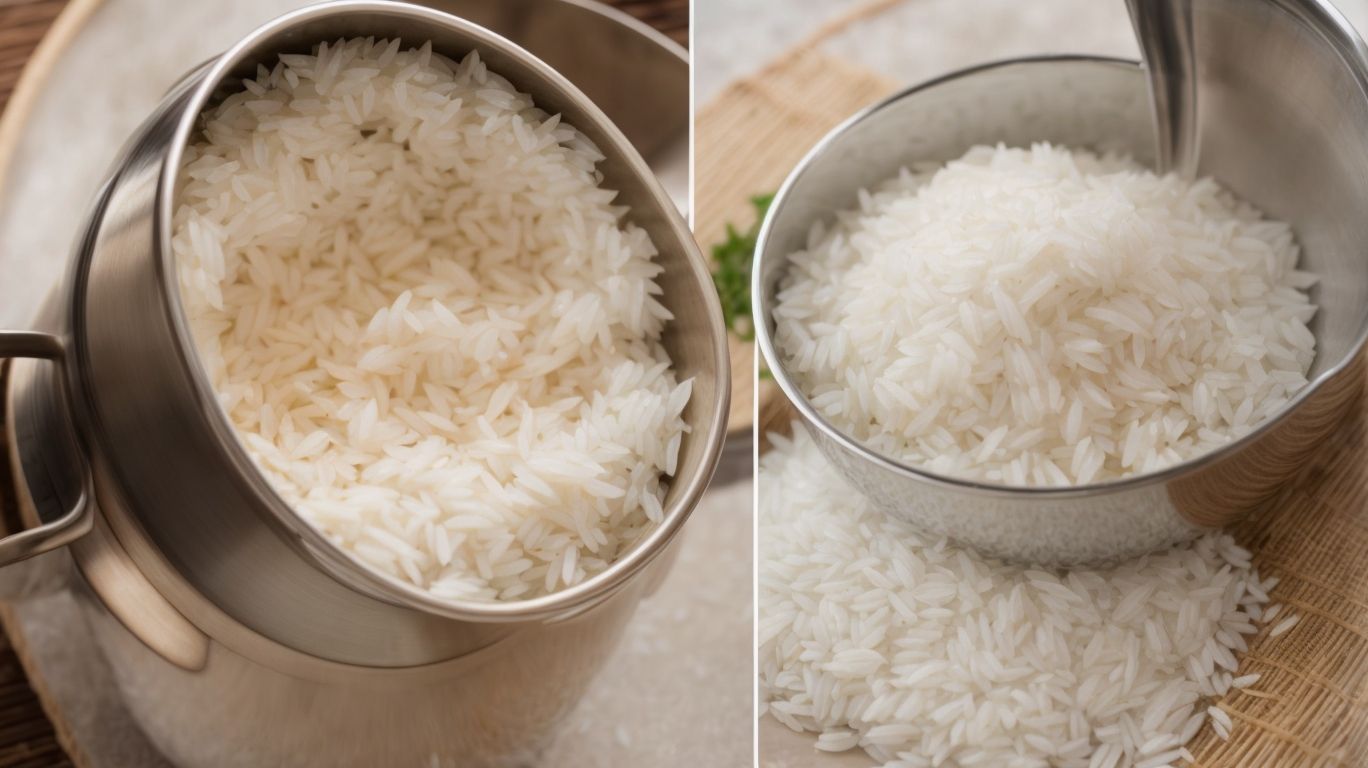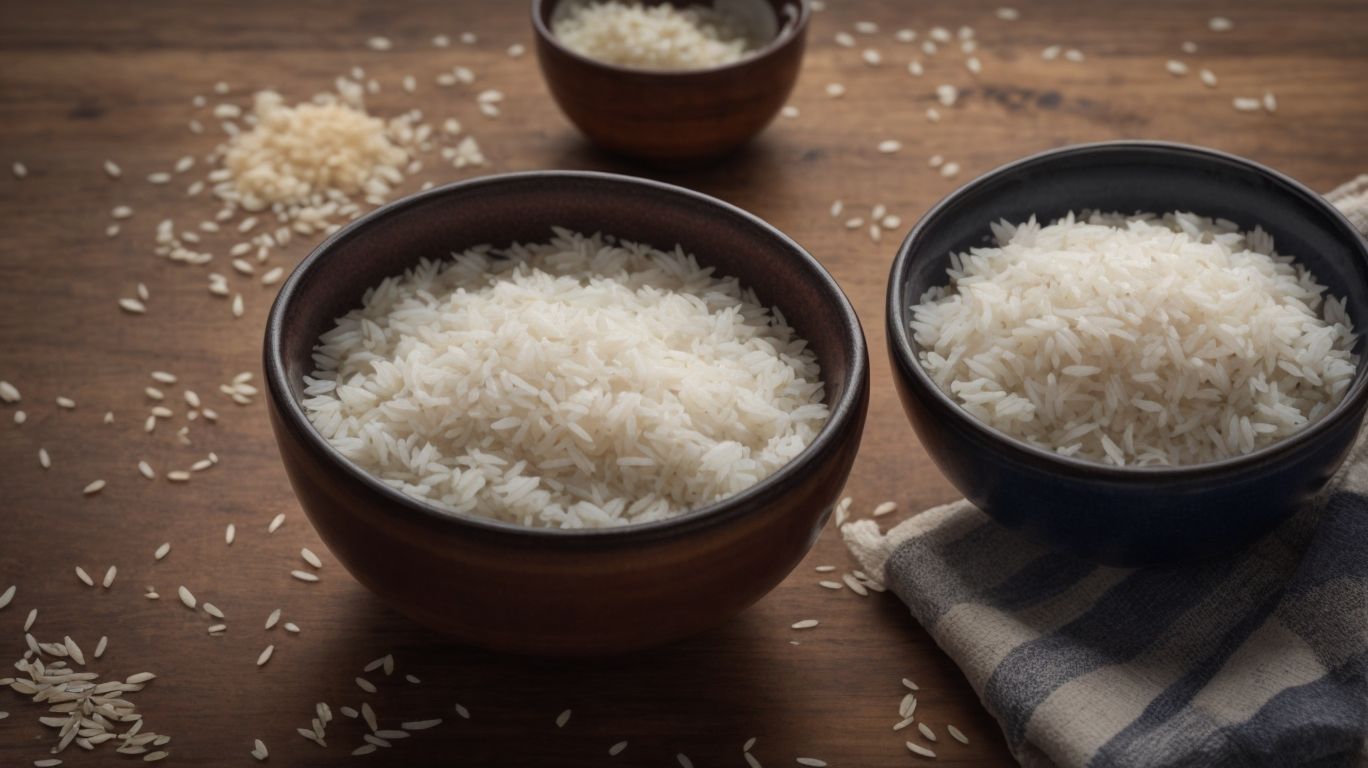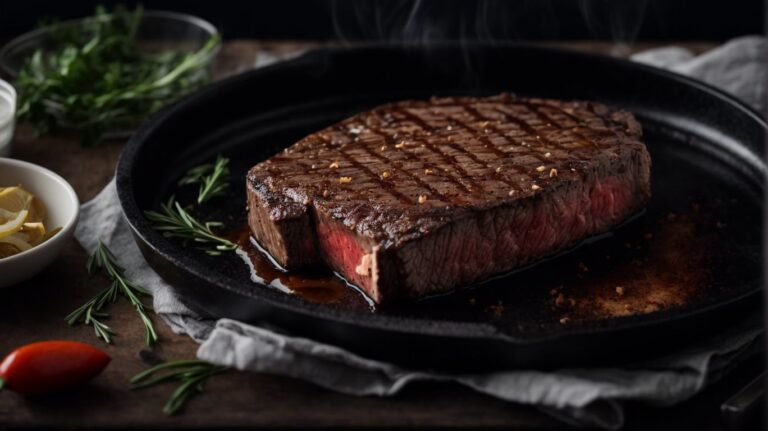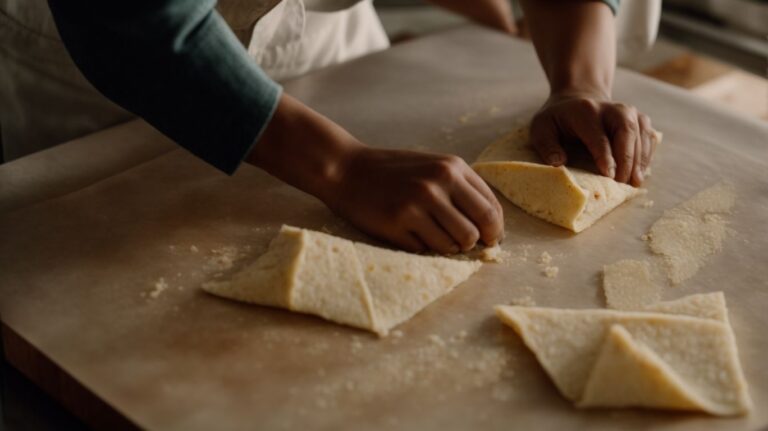How to Cook Basmati Rice After Soaking?
Do you find yourself struggling to achieve perfectly cooked basmati rice every time? If so, soaking your rice before cooking might just be the game-changer you need.
In this article, we will delve into the world of basmati rice – exploring what it is, why soaking is essential, and how to do it properly. We will also discuss the benefits of soaking, different cooking methods, ideal ratios of rice to water, and tips for achieving fluffy, separated grains every time.
So, let’s get cooking!
Key Takeaways:
What is Basmati Rice?
Basmati rice is a long-grain variety known for its delicate aroma, fluffy texture, and distinct flavor profile, making it a popular choice in Indian and other cuisines around the world.
Its slender grains elongate and become even more fragrant when cooked, making it a delightful addition to biryanis, pilafs, and other rice dishes.
Due to its unique properties, Basmati rice has gained recognition not only for its exceptional taste but also for its ability to complement a wide range of flavors and spices, standing out as one of the most sought-after rice varieties globally.
Why Soak Basmati Rice?
Soaking Basmati rice before cooking is essential to enhance its texture, promote even water absorption, and achieve the desired fluffy grains, whether using the absorption method or the drain method.
When you soak Basmati rice, it allows the grains to swell and relax, resulting in a more uniform texture and consistent cooking. This process also helps the rice absorb water evenly, preventing some grains from being undercooked while others are overcooked. Through soaking, the rice grains become elongated and separate easily after cooking, providing that signature light and airy quality.
How to Soak Basmati Rice?

Credits: Poormet.Com – Alexander Baker
To properly soak Basmati rice, measure the required amount of rice and water, place the rice in a bowl, cover it with water, and let it sit for the specified duration to allow the grains to absorb moisture effectively.
What is the Ideal Soaking Time for Basmati Rice?
The ideal soaking time for Basmati rice typically ranges from 30 minutes to 2 hours, allowing the grains to absorb water adequately for optimal cooking and fluffy texture.
During this soaking period, the grains gradually swell as they take in moisture, which helps in achieving the desired fluffy texture when cooked. The absorption process is crucial as it not only affects the final texture but also influences the overall flavor profile of the rice. By soaking Basmati rice for the recommended duration, you ensure that each grain cooks evenly and maintains its distinct long, slender shape. This process is especially important when preparing dishes like biryanis or pilafs, where the texture of the rice plays a significant role in the overall dish.
What Are the Benefits of Soaking Basmati Rice?
Soaking Basmati rice enhances its cooking quality by improving the texture, promoting even water absorption, and ensuring the grains cook to perfection with a fluffy and separate outcome.
When Basmati rice is soaked before cooking, it allows the grains to elongate uniformly during the cooking process, resulting in a dish that not only looks visually appealing but also maintains a consistent texture. This process of soaking helps the rice absorb water evenly, leading to a more balanced and well-cooked final product. The end result is a plate of rice that is light, fluffy, and each grain distinct, making it a perfect accompaniment to a variety of dishes.
How to Cook Soaked Basmati Rice?
Cooking soaked Basmati rice involves selecting a suitable method such as stovetop or rice cooker, using the ideal water-to-rice ratio, and monitoring the cooking process to achieve perfectly cooked, fluffy grains.
What Are the Different Methods of Cooking Soaked Basmati Rice?
There are various methods to cook soaked Basmati rice, including stovetop cooking and the drain-to-colander technique, each offering unique benefits for achieving fluffy, aromatic rice.
Stovetop cooking involves simmering the soaked Basmati rice in a pot of water until it’s perfectly tender. This method allows for better control over the cooking process, ensuring the rice is not overcooked or undercooked.
On the other hand, the drain-to-colander technique involves parboiling the soaked Basmati rice and then draining it in a colander, stopping the cooking process immediately to prevent mushy rice and locking in the aroma.
Both methods result in fluffy, separate grains of rice that are ideal for various dishes, from aromatic biryanis to simple rice bowls.
What Are the Ideal Ratios of Rice to Water for Cooking Soaked Basmati Rice?
The ideal ratios of rice to water for cooking soaked Basmati rice vary depending on the method used, with general guidelines recommending a specific water measurement to ensure optimal absorption and fluffy rice grains.
For soaked Basmati rice, the most crucial aspect lies in striking the right balance between rice and water. Typically, the ratio is around 1.25 to 1, meaning 1 1/4 cups of water for every cup of soaked rice.
Experts suggest measuring the water precisely to prevent undercooked or mushy outcomes. By using this ratio, you can achieve that perfect texture—fluffy individual grains that are not overly dry or excessively moist.
Tips for Cooking Perfect Basmati Rice After Soaking
To achieve perfect Basmati rice after soaking, consider factors like water absorption, cooking time, and high-quality aged Basmati rice for fluffy, aromatic, and non-sticky grains.
How to Prevent Rice from Sticking to the Pot?
Preventing Basmati rice from sticking to the pot involves using appropriate heat levels, stirring occasionally, and ensuring consistent water levels throughout the cooking process.
When cooking Basmati rice, starting with proper heat management is crucial. Begin by bringing the water to a boil over high heat and then lower it to a simmer once the rice is added. Maintaining the simmer instead of a rapid boil helps prevent the rice from sticking at the bottom.
Stirring the rice occasionally during cooking can distribute the heat evenly, reducing the chances of clumping and sticking. Aim to gently fluff the rice with a fork rather than vigorous stirring, which can break the grains.
Consistency in water levels is another key factor. Be sure to measure the water accurately and refrain from adding too much or too little water, as this can impact the texture and stickiness of the rice.
How to Achieve Fluffy and Separated Grains?
Achieving fluffy and separated grains in Basmati rice requires careful attention to the cooking process, including proper soaking, suitable cooking methods, and precise water measurements for the ideal fluffiness.
Soaking the Basmati rice before cooking is crucial as it helps the grains absorb water, ensuring even cooking and preventing clumping. Choosing the right cooking method, whether it’s boiling, steaming, or using a rice cooker, also plays a significant role in achieving the desired texture. Measuring the water accurately is key to avoid undercooked or mushy rice. The balance of water and rice is fundamental in the cooking process, ultimately leading to perfectly fluffy and separate grains of Basmati rice.
How to Add Flavor to Soaked Basmati Rice?
Enhancing the flavor of soaked Basmati rice involves infusing aromatic spices, herbs, or ghee during the cooking process to create a fragrant, non-sticky, and flavorful dish.
One popular method is to add whole spices such as cloves, cardamom, and cinnamon to the soaking water, allowing the rice to absorb these aromatic flavors. Incorporating fresh herbs like cilantro, mint, or curry leaves while cooking adds a refreshing aroma and taste.
Another effective way to elevate the taste is by drizzling clarified butter (ghee) over the cooked rice before serving, enhancing both the aroma and texture. This rich and nutty addition not only reduces stickiness but also imparts a luxurious flavor to the dish.
Conclusion

Credits: Poormet.Com – Jordan Ramirez
Mastering the art of cooking Basmati rice after soaking involves a blend of precise techniques, quality ingredients, and attention to detail, resulting in a delightful dining experience with perfectly cooked, fluffy grains.
One of the key elements to achieving those fluffy grains is the proper rinsing of the rice prior to cooking. This step helps remove excess starch, resulting in individual grains that cook up light and separate.
The quality of the water used is crucial. Opt for filtered water to prevent any unwanted flavors from affecting the rice.
Once the rice is soaked and rinsed, make sure to use a heavy-bottomed pot with a tight-fitting lid to ensure even cooking and steam circulation, creating that perfect texture.
Final Thoughts on Cooking Basmati Rice After Soaking
In wrapping up the discussion on cooking Basmati rice after soaking, aspiring chefs can elevate their dishes to restaurant-quality standards by mastering the soaking and cooking processes, ensuring each grain exudes aroma and flavor in every bite.
One crucial aspect to achieving that signature Basmati rice excellence lies in the soaking time. For optimal results, soak the rice for at least 30 minutes but ideally up to 2 hours. This process allows the grains to absorb water, leading to a fluffier texture post-cooking. The lengthened soaking duration intensifies the aromatic aspects of the rice, creating a more fragrant final dish.
In terms of cooking the soaked Basmati rice, precision is key. Use the absorption method for cooking to maintain the integrity of each grain. Bring the water to a boil, add the rice, then cover and simmer over low heat until all the liquid is absorbed. This technique ensures perfect, fluffy rice with distinct individual grains.
By honing the art of soaking and cooking Basmati rice, budding culinary enthusiasts can experience the delight of serving restaurant-quality rice dishes in the comfort of their own homes. The attention to detail in these processes not only enhances the flavor and aroma but also sets the foundation for culinary excellence in every meal prepared.
Frequently Asked Questions
How to Cook Basmati Rice After Soaking?
Basmati rice is a popular choice for many dishes, known for its fragrant aroma and fluffy texture. Soaking the rice before cooking is an important step to ensure the perfect result. Here are some frequently asked questions about cooking basmati rice after soaking.
Why do I need to soak basmati rice before cooking?
Soaking basmati rice helps to soften the grains and release excess starch, resulting in a fluffier and more evenly cooked rice. It also helps to reduce cooking time and prevent the rice from becoming mushy.
How long should I soak basmati rice before cooking?
The recommended time for soaking basmati rice is 30 minutes to 1 hour. This allows enough time for the rice to absorb water and soften, without becoming too mushy.
Can I soak basmati rice for longer than 1 hour?
Yes, you can soak basmati rice for longer than 1 hour, but it is not recommended. Soaking for too long can cause the rice grains to become too soft and lose their texture, resulting in a mushy consistency.
Do I need to rinse basmati rice after soaking?
Yes, it is important to rinse basmati rice after soaking. This helps to remove any excess starch and debris, resulting in a cleaner and fluffier end result.
Can I use the soaking water to cook basmati rice?
No, it is not recommended to use the soaking water to cook basmati rice. This water may contain excess starch and impurities that can affect the texture and taste of the rice.
What is the best way to cook basmati rice after soaking?
The best way to cook basmati rice after soaking is to use the absorption method. This involves adding the soaked rice to a pot with the appropriate amount of water, bringing it to a boil, then covering and simmering until all the water is absorbed. This results in fluffy and perfectly cooked basmati rice.




